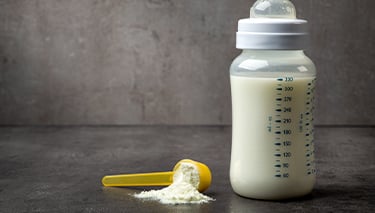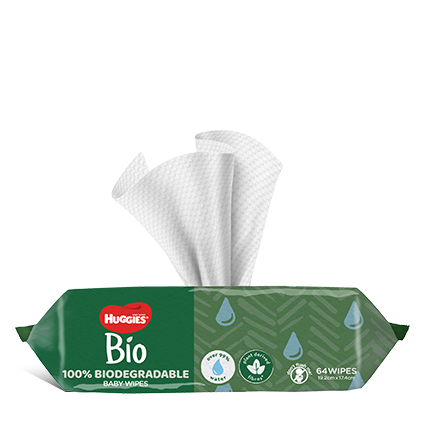If you have ever tried to be more informed about infant formula, you may have found information somewhat sparse. You are not alone, and in fact this is a widespread issue. Policy preventing formula companies from pushing infant formula (by advertising or promotion to healthcare professionals) has had its reasoning: as consumers we are all aware of the huge effect that marketing can have on public health and the perceptions of consumers. Indeed there is a huge need for information in this area – commonly even your healthcare professionals are left to seek out training in complementary feeding.
By virtue of the importance of feeding and nourishing your growing baby it is essential that parents and caregivers who are using infant formula have easy access to resources and support. Interestingly, the World Health Organisation Code of Marketing of Breastmilk Substitutes states that while clear advice should be provided about the advantages of breastfeeding, there should be no disadvantage for those who do not breastfeed, and information should be available regarding suitable options.
So let’s lift the lid and take a closer look at some of the issues that parents raise when using formula. Specialised formula, for example, for premature infants or babies in hospital, is not discussed as these bubs need individualised feeding and care.
Who is running the show?
Food Standards Australia New Zealand (FSANZ) tightly controls the manufacture of infant formula. You can find full details on the guidelines manufacturers must follow on the FSANZ website (listed under the Standard 2.9.1 – Infant Formula Products).
Formula manufacturers must adhere to regulations regarding a wide array of factors, including but not limited to:
- Protein (which must be within a set range) and the source of the protein (eg. soy, cows’ milk, rice, etc)
- Energy and fat content (which must be within a set range)
- The number and quantity of vitamins and minerals and ingredients thought to be biologically active, such as fish oils and probiotics
- Clear information about serving size and preparation
- The maximum level of aluminium
- The appropriate infant age for the formula
- The font size (yes the font size is prescribed – thank goodness for those of us who don’t take their glasses shopping)
- Carbohydrates, albeit indirectly as a result of the moderation of the nutrients given above
- The ratio of essential fatty acids (LA and ALA)
- The ratio of omega-6 to omega-3 fish oil fatty acids (EPA and DHA)
There are, however, a handful of vitamins and minerals that FSANZ give only a guideline on the maximum level. This includes vitamin C and some B vitamins, though many of the minerals are indirectly controlled via the ratio prescriptions of vitamins and minerals. In addition to this, the level of amino acids and proteins is monitored to prevent excessive ‘load’ on babies’ kidneys. Proteins are large molecules that have the capacity to be ‘heavyweights’ when it comes to manoeuvering about the body. Naturally, the use of additives is also strongly regulated.
In addition, specific warnings about adhering to the preparation guidelines are also required and, you may never have noticed, but all formula containers or packets must also have the following, clearly marked “Breast milk is best for babies. Before you decide to use this product, consult your doctor or health worker for advice”. The claims relating to the ingredients that manufacturers use are also strictly controlled, though companies can apply to include claims about specific vitamins, minerals and biologically active compounds in regards to infant and child health. You might find it interesting to know what manufacturers aren’t allowed to do and say, for example you will not see:
- Pictures of babies
- Use of words relating to ‘humanised’ or ‘maternalised’
- Claims that formula is suitable for all infants
There are many more regulations, so you can see just how strictly regulated formula is, and for good reason when we are talking about the nutrition and health of our babies.
What is formula?
The starting product for formula is most commonly cows’ milk, specifically the protein component that is made of two main proteins, casein (also known as curds, which coagulate or clump together to form cheese) and whey (the remaining watery part that separates from the curd); hence a formula can be either casein or whey dominant; the latter is the most common. Other starting points can be soy or goats’ milk and soy, which don’t contain whey or casein.
Currently there are over 20 different formulas for healthy full-term infants of various ages (from ‘newborn’ to ‘follow-on’ formula and, more recently, ‘toddler’ varieties). Selecting the ‘ideal’ formula for baby can be a daunting task for parents and naturally feeding your child is an emotive subject; just the tin alone can be scary. Subtle claims of scientifically superior composition, most desirable makeup and optimal nutritional features for growth and development can leave you feeling confused.
See our types of baby formula article for a simple break-down of the different formula types.
Babies, allergies and formula
Food intolerances are often confused with food allergies. Understanding the difference is important because they are often dealt with quite differently. For example, food intolerances don’t involve an immune reaction by the body and so can’t be classed as an allergy. Common food intolerances include milk lactose, naturally occurring substances in foods such as salicylates, and reactions to preservatives, colourings and additives. The symptoms and signs of adverse reactions can occur singularly or in combination, with the severity of the reaction depending on the child and the amount of the offending agent that has been eaten (at times there may be a cumulative effect).
Food allergy refers to an immune response to a whole food protein, or similar large molecule, for example from a food. In the case of a food allergy our body reacts to food proteins by treating it as an antigen (foreign body), which causes a release of chemicals such as histamine, antibodies and other immune substances. Such allergic responses always involve antibodies produced by the immune system, which give rise to signs and symptoms that may not always be obvious.
Recommendations to reduce or prevent allergy or food intolerance
Agencies such as the Australasian Society of Clinical Immunology and Allergy (ASCIA) recommend women, where possible, to breastfeed for six months, or the use of expressed breastmilk as the next best option where breastfeeding is not possible. If however complementary feeding has begun then it is suggested that infants be given hydrolysed formula (HF). There are two types of HF, partially hydrolysed (pHF) which can be freely purchased in stores and chemists and extra-hydrolysed formula (eHF) which requires a prescription from a GP or similar. In Australia eHF is subsided if your baby has a confirmed allergy to both cows’ milk and soy milk.
Partially hydrolysed formula (H.A.)
As we know, most infant formula is either modified cows’ milk-based, and – not being ‘native’ to the infant’s digestive system like breastmilk – the proteins can be treated as ‘foreign’ bodies. Partially hydrolysed infant formulas, denoted on tins as H.A., contain protein that is broken up so that the complex protein molecules are easier to process and are less likely to be a threat to the baby’s defences.
HA formulas are often recommended for babies who experience colic or reflex. HA formulas don’t form curds in the stomach like casein-based formula may, and it appears HA formula is digested in a similar fashion to breastmilk and hence ‘sits’ better with babies. Some infant formula companies are applying to lower the protein content of their infant formula closer to breastmilk; to date only one HA-type infant formula has such approval. Research on this type of formula appears to suggest that it reduces the amount of metabolic processes required by baby to digest the protein, and that it aids digestion, reduces constipation, allergies, and stress on organs such as the still-developing kidneys.
Constipation
Constipation tends to be more common in bubs fed with formula; often the protein in formula is a little harder to digest and can cause water to be drawn out of the intestinal canal to help the kidneys process these proteins. Wherever fluid is lost from the intestinal canal this can increase the likelihood of constipation as it causes the faecal matter to become dry and consequently hard to pass. Keep in mind that just because a bub turns red and grunts and groans when passing a stool doesn’t mean they are constipated. Constipation refers to dry, hard-to-pass stools. Even babies who pass stools only every few days aren’t necessarily constipated, however a change in bowel habits should be investigated.
For bubs on formula, check for the following:
- Scoop sizes for different formulas can differ, so always check how to make up any formula.
- The ratio of formula to water. Ensure that the scoop is not tightly packed. Measure the water first. You can always call the manufacturer’s hotline to check on this.
- That the formula is right for your bub; some don’t suit all babies. Research suggests that formulas with probiotics can soften stools and also that the protein composition of a formula can affect constipation.
What if my baby doesn’t finish the bottle?
It is commonly accepted that feeding on demand for breastfeeding is most ideal, and bottle-feeding with formula is no different. Naturally there will be a great deal of variation from one baby to another in terms of both the amount taken at a feed and the number of feeds a day. Demand feeding allows baby to use their innate abilities to self-regulate, which has been shown to be positive for later eating habits. Don’t force your baby to finish a bottle, instead, assuming baby is healthy, follow their lead.
While the information on formula packaging is a rough guide, baby should have plenty of wet nappies (6-8 at least per day), grow in a consistent fashion, be contented, active and thrive. If your baby is growing at a consistent rate then you can be reasonably sure that what is going in is meeting their needs. Figure 1 is a guide recommended for infants and toddlers on formula by the NHMRC of Australia (2003):
Figure 1: Average formula requirements for infants and toddlers
| Age | Amount per kg of body weight daily |
|---|---|
| Day 1 | 30 ml |
| Day 2 | 60 ml |
| Day 3 | 90 ml |
| Day 4 | 120 ml |
| Day 5 to 3 months | 150 ml Some (especially premature) babies may need 180-200 ml |
| 3 to 6 months | 120 ml |
| 6 to 12 months | 90-100 ml |
| 1 to 2 years | 90 ml |
Points to remember when using a bottle
- Guides for formula intake are not a one-size fits all, instead use your baby as your guide.
- Always check the temperature of the formula on the inside of your wrist.
- Always hold baby while feeding to avoid spluttering, choking, ear infections and tooth decay.
- Enjoy feeding times and foster eye-to-eye contact while nursing your baby.
- Never allow baby to fall asleep with a bottle as this can cause severe tooth decay – called bottle decay.
Recommending an infant formula
This is not a simple task. Formulas with LCPs, beta-carotene, nucleotides or probiotics in them may be more expensive. Keep in mind that you should not feel guilty if you aren’t able to afford these types of formulas and remember that the strict control over the manufacture of infant formulas means that they are reasonably similar. Also, the evidence that these additions provide any real long-term benefits is still unclear. Infant development and growth is very complicated, involving the interaction of a vast array of different factors that act in synergy with each other. Such additions, even if they are helpful, are only a few of the compounds found in breastmilk that affect the development of a baby, and a great many babies in the past have done very well without them.
Ultimately, the best formula is the one that suits your baby, this may mean a few trials and errors but fitting the formula to the baby is ideal.
Why is cows’ milk not suitable for babies?
There are many reasons why cows’ milk or anything other than breastmilk or infant formula are not suitable as a baby’s source of nutrition. In regards to cows’ milk it not only has the wrong quantity of protein (2.5 times more than breastmilk) but its protein quality is not suitable, it is generally 80 per cent casein-dominant and hence hard to digest. In addition, the type of fat in cows’ milk is not easy for babies to absorb (breastmilk has just over 50 per cent fat), in addition cows’ milk can cause intestinal bleeding and the calcium level can further compromise iron levels. And lastly, many nutrients have levels too low for baby’s needs including vitamin A, D, C, E and iron.
Filtered vs tap water
You may have been alerted to some recent concern regarding the use of bottled water for making up formula. Again current research doesn’t support this concern, so cooled boiled water or bottled water both remain safe.
Nothing is too small to check
If you are at all concerned about your baby’s feeding, growth or health don’t hesitate to see your doctor or child health nurse. Small changes in a baby can have a big impact due to their rapid rate of growth, metabolic processes, still developing body organs and large body surface area. If in doubt, check it out!
Words by Leanne Cooper from Sneakys Baby and Child Nutrition.
Helpful links
Last Published* May, 2024
*Please note that the published date may not be the same as the date that the content was created and that information above may have changed since.




















